 |
 |
 |
| |
Taribavirin (ribavirin substitute) vs Ribavirin
|
| |
| |
EASL April 23-26 2009, Copenhagen, Denmark
Reported by Jules Levin
TREATMENT WEEK 48 RESULTS OF WEIGHT-BASED TARIBAVIRIN VERSUS WEIGHT-BASED RIBAVIRIN, BOTH WITH PEGINTERFERON ALFA-2B, IN NAÏVE CHRONIC HEPATITIS C, GENOTYPE 1 PATIENTS
F. Poordad1, E. Lawitz2, R. Pozza3, M. Shiffman4, B. Bacon5, E. Godofsky6, D. Halliman7, J. Heise7, E. Chun7, J. Hammond7
1Cedars-Sinai Medical Center, Los Angeles, CA, 2Alamo Medical Research, San Antonio, TX, 3SCTI Research Foundation Liver Center, San Clemente, CA, 4Virginia Commonwealth University Medical Center, Richmond, VA, 5Saint Louis University School of Medicine, Saint Louis, MO, 6University Hepatitis Center at Bach and Godofsky, Sarasota, FL, 7Valeant Pharmaceuticals North America, Aliso Viejo, CA, USA
Background and aims: Taribavirin (TBV) is an oral pro-drug of ribavirin (RBV). Previous studies using fixed doses of TBV vs weight-based dosed (WBD) RBV, both given with pegylated interferon (PEG), showed that TBV has a better safety profile in terms of the incidence of anemia. The current study seeks to determine if WBD TBV demonstrates efficacy comparable to that of RBV while maintaining the previously documented anemia advantage.
Methods: A US phase 2b randomized, open-label, active-controlled, parallel-group study is being conducted in treatment-naÏve, genotype 1 patients stratified by body weight and baseline viral load. Patients were randomized 1:1:1:1 to receive TBV 20, 25, or 30 mg/kg/day or RBV (800, 1000, 1200, or 1400 mg/day) with PEG alfa-2b for 48 weeks.
Results: 278 patients were randomized: mean age 49 yr; 61% male; 30% African-American or Latino; 81% viral load ≥400,000 IU/mL; and mean body weight 82 kg. Rates of virologic response for treatment weeks (TWs) 4, 12, and 48 and anemia for TW48 are shown here.
Table:
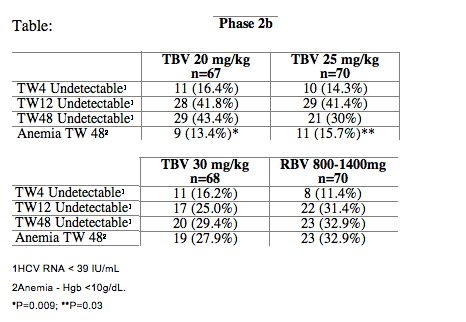
The most common adverse events (AEs) through TW48 were fatigue, headache, nausea, and diarrhea. AEs, except diarrhea, were comparable across the treatment arms. Diarrhea, reported about twice as frequently in TBV patients, was generally mild and not dose-limiting.
Conclusions: All WBD doses of TBV/PEG demonstrated comparable efficacy and tolerability vs RBV/PEG at TW48. Rates of anemia were statistically significantly lower for TBV 20-25 mg/kg than RBV/PEG. End-of-treatment response rates were similar to other studies with a higher proportion of African-American and Latino patients. These data suggest that WBD with TBV may provide a safe and effective alternative to RBV for the treatment of chronic hepatitis C.
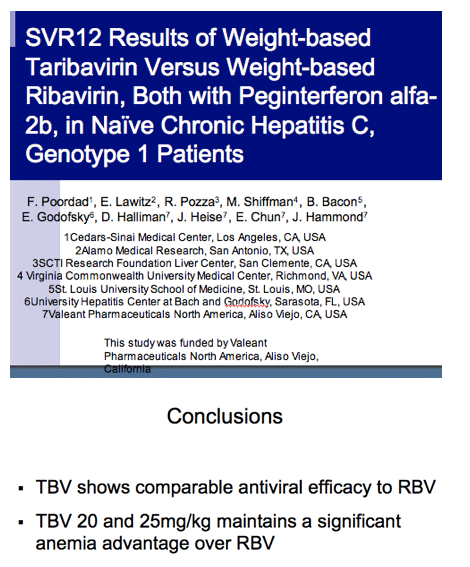
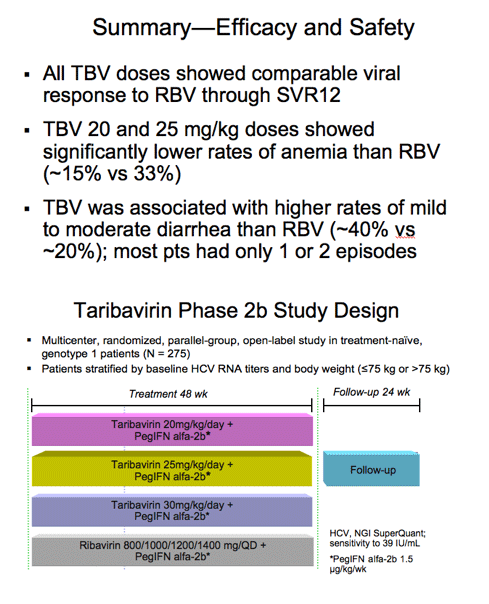
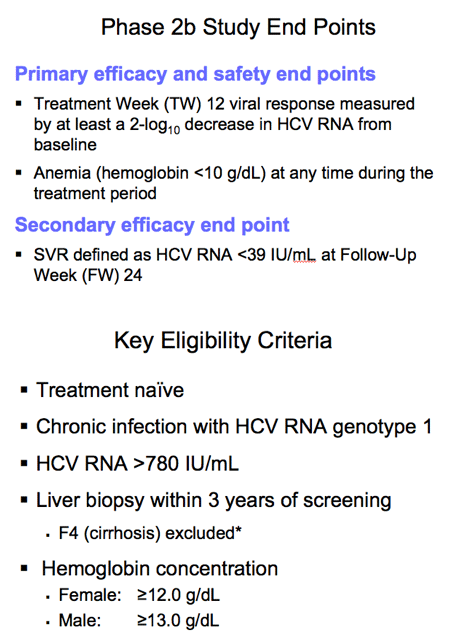
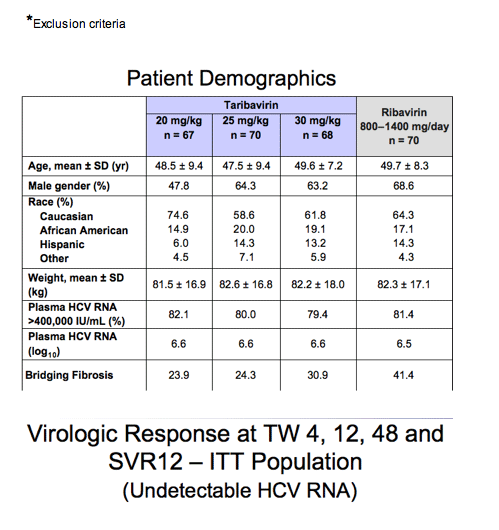
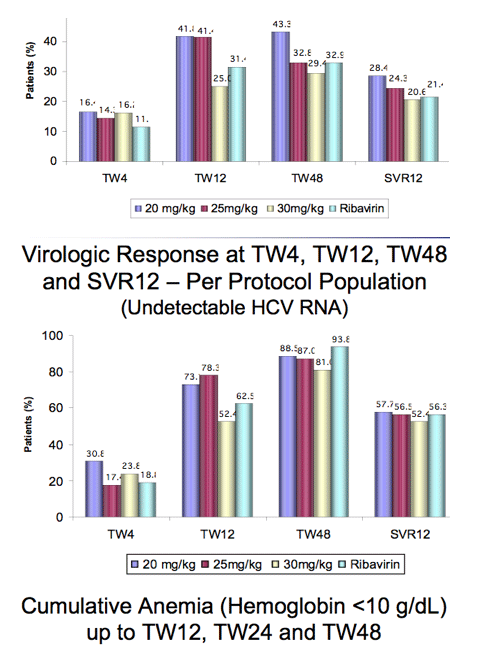
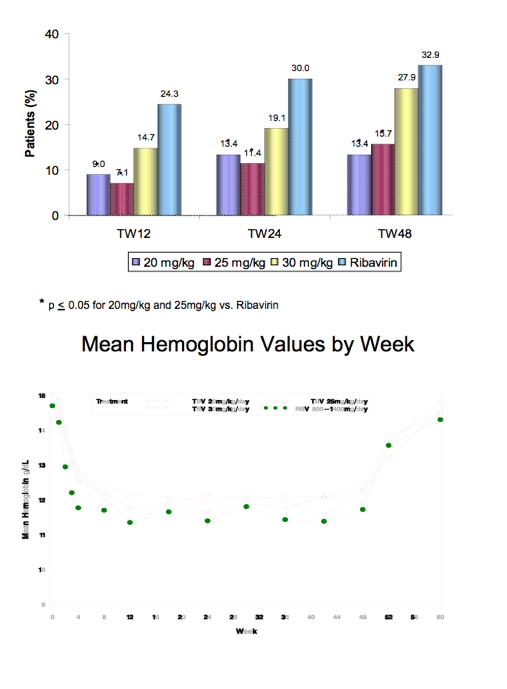
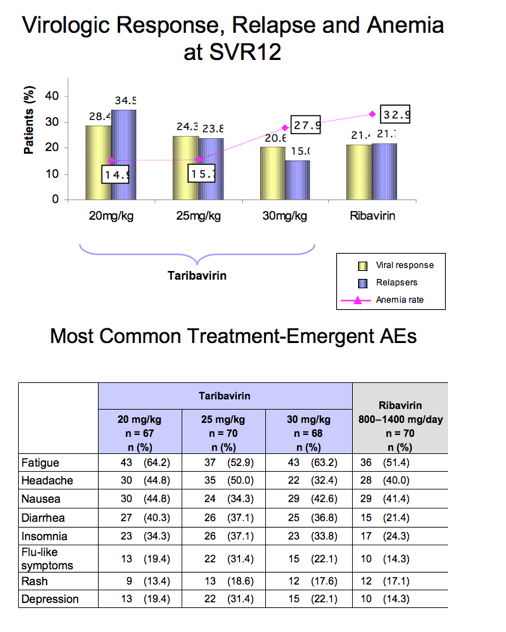
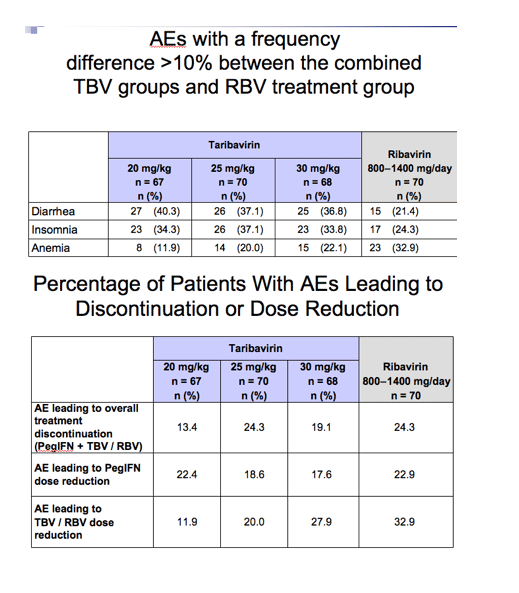

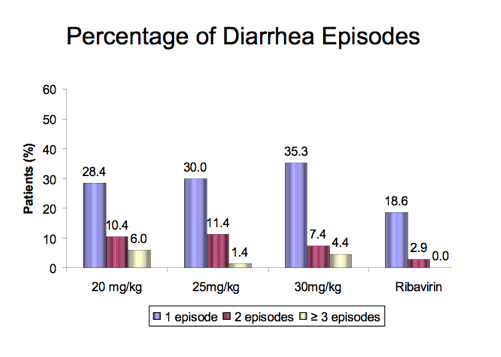
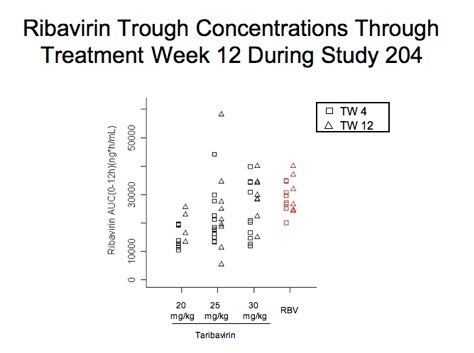
|
| |
|
 |
 |
|
|